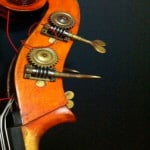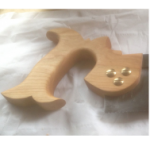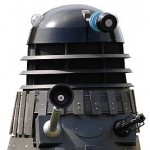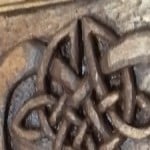Paul's Sharpening Method
Welcome! / Forums / General Woodworking Discussions / Tools and Tool Maintenance/Restoration / Paul's Sharpening Method
Tagged: free hand, freehand, sharpening
- This topic has 45 replies, 23 voices, and was last updated 10 years, 8 months ago by
 Franco.
Franco.
-
AuthorPosts
-
I bought the 3 x 8 DMT from Amazon.
Extra Course : 220 mesh, 60 micron
Fine : 600 mesh, 25 micron
Extra Fine : 1200 mesh, 9 micron“DMT Extra Fine sharpening stones are 1200, Fine are 600 and Coarse 325 grit.
EZE Lap are Superfine 1200, Fine 600 and Coarse 250.”
http://paulsellers.com/2012/05/questions-answered-diamond-sharpening-plates/
 10 October 2013 at 8:42 pm #19821
10 October 2013 at 8:42 pm #19821After doing PS method of sharpening for a year or more, I changed to the hollow grind method. Maybe since I have oilstones. I don’t have a real coarse stone, or most likely its a technique issue, I could never get the tools really sharp. I did try it for a long time. I still do my tools freehand but have more success with the hollow grind.
 10 October 2013 at 9:13 pm #19827
10 October 2013 at 9:13 pm #19827I applaud your perseverance.
I think method only works well on diamond plates with an oil stone would be hard work. You would have to do the triple of amount of strokes at least on oil stones. I would not want to try Paul’s method on softer water stones either.
In the end just get your tools sharp the best way you can with what you have.I use Arkansas stones, soft and hard black, with a strop to polish the bevel to a mirror finish. I cannot say how many more strokes it takes to sharpen, than using a diamond stone, but I am able to get razor sharp edges using Paul Sellar’s method. But again, I cannot compare what I get to what others may get, because I just haven’t seen anyone else sharpen edge tools. One big negative is having to use oil. I end up getting oil on my hands, and sometimes the work bench that can smudge, or bleed on to the work piece I’m working on.. However, having a nice thin coat of oil on the blades does help prevent rust..
Like many others have said, we need to use whichever method works best for themselves.. I know the Arkansas stones work well for me. I purchased the Arkansas stones before I knew about Paul Sellars and if I had a chance to do it all over again, I probably just follow his recommendations and use diamond stones. EZE laps are the cheapest I have seen and have often considered picking up a coarse or extra coarse diamond plate to re-establish a bevel, especially on flea market and ebay finds..
cheers!

I use a set of waterstones that I got from Workshop Heaven a couple of years ago. I was getting by using the Veritas MkII honing jig but decided to give Paul’s method a trial a month or two ago. I made a stop out of some suitable leather and am using Farecla G3 Cutting Paste with it. I’m getting beautiful sharp blades now and the honing guide is rapidly gathering dust in a draw.
My long term plan is to save up for some diamond plates so I can copy Paul’s setup but at the moment I’d rather spent the money on timber so I can carry on building my projects. The plates are a nice convenience for me rather than a necessity for me all the time I’m getting the results I am with my current stones. Besides, Paul’s method has made my sharpening so much quicker that I find I’m much more inclined to ‘top up’ the sharpening rather than let the edge get dull and then be forced to have a full on sharpening session.
 11 October 2013 at 4:52 pm #19838
11 October 2013 at 4:52 pm #19838That’s good to hear Jon being able to use water stones. My fear would be the amount of lapping you would have to do to keep stones flat. Especially when doing plane irons .
I hope people don’t get me wrong I have used Paul’s method and do get good results. I just cannot get the look of a convex bevel right in my head. There is something about hollow ground bevel with a tiny micro bevel just looks right. That’s just me.
If I use a guide I use an old Eclipse guide has a small wheel and you can lean it over to take a bit more off of corners. On most bench planes a small camber preferable. 27 October 2013 at 9:01 pm #20424
27 October 2013 at 9:01 pm #20424Interesting thread. I am retired. I have spent wat too much money on exploring honing methods over the past 20 years. Before I met Paul, I went back to oil stones, for several reasons. After seeing his method, I tried it with my oil stones. Works very very well.
 27 October 2013 at 9:40 pm #20425
27 October 2013 at 9:40 pm #20425Ron,
I can’t find the thread now but I think I recall Paul saying his method works just fine with other types of stones. The only change he makes when he uses water or oil stones is he doesn’t take the burr off at each state because of course the stones can’t be relied upon to provide a perfectly flat surface for that. He only takes the burr off on the strop.
John
 31 October 2013 at 6:08 pm #20645
31 October 2013 at 6:08 pm #20645I have heard that stropping carries with it a huge dubbing risk and that one would be better off polishing with a 16000 grit shapton as the final honing step. Any thoughts on this?
Ron
 31 October 2013 at 9:22 pm #20651
31 October 2013 at 9:22 pm #20651I am only guessing but I think Ron means you can round over the edge using stropping method. I could be wrong but that is what I think Ron means by dubbing.
If that is correct, I think the entire “free hand” sharpening method that Paul uses and teaches is prone to that result.
But, I don’t think the “rounding over” thing is anything to worry about. Paul addresses it (I believe) in at least one of his sharpening videos. I think the one wherein he’s sharpening the chisel.
If that is a concern, I would think one could use the “free hand” method for quicker, faster sharpening. Then periodically, use the angle guide method to restore the flatter 25* bevel — from time to time.
Here’s the video. It should start at 2:41 where he points it out.
 31 October 2013 at 11:17 pm #20665
31 October 2013 at 11:17 pm #20665So far the wood, the chisels, and I haven’t noticed any problems related to that.
-
AuthorPosts
- You must be logged in to reply to this topic.
